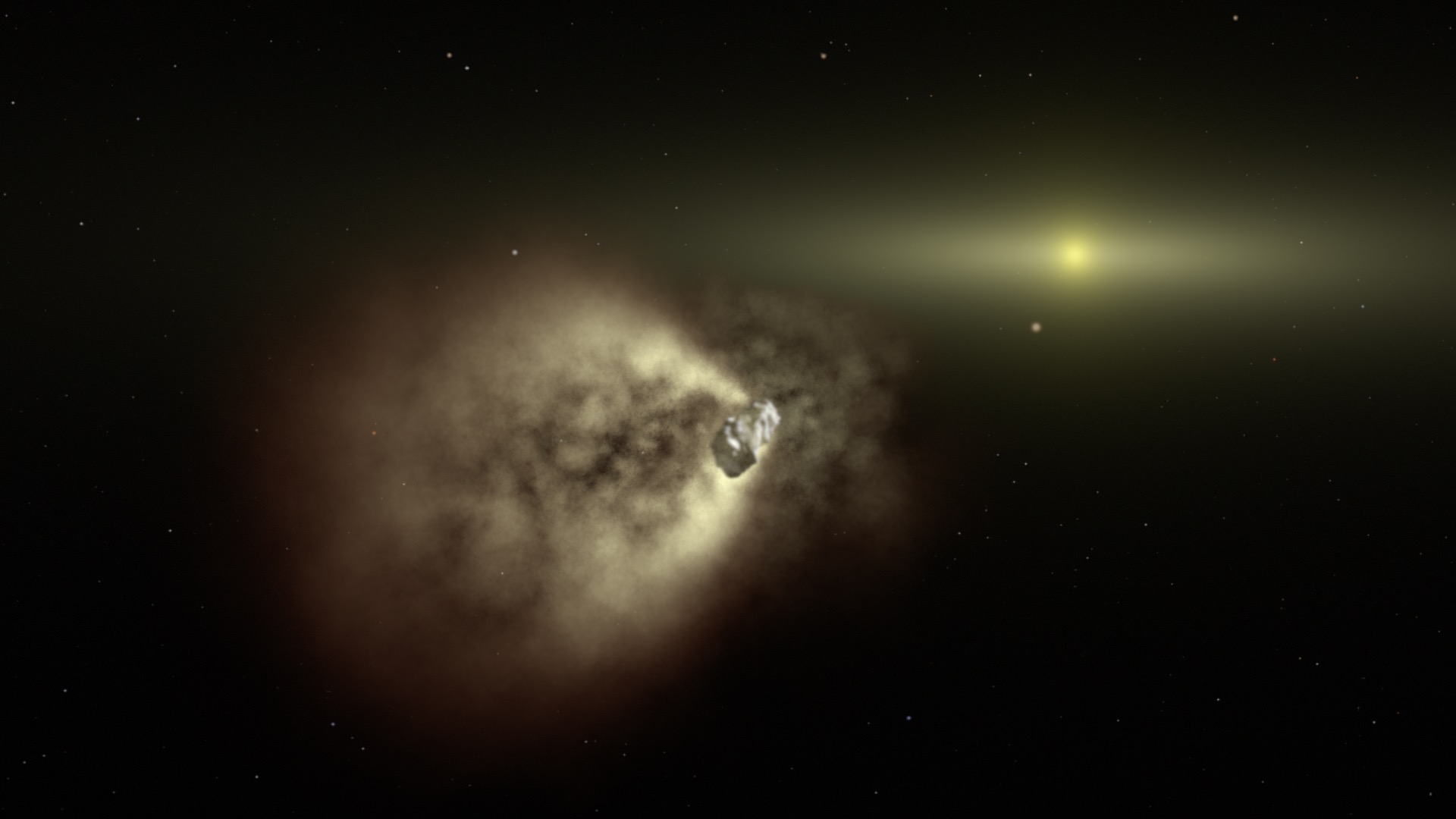A Slowly Spinning Comet

A rotating green comet unexpectedly slowed its spin.
A rotating green comet that orbits the Sun every 5.4 years dramatically slowed in its spin. Images taken in May 2017 by NASA’s Neil Gehrels Swift Observatory revealed that comet 41P/Tuttle-Giacobini-Kresák, or 41P for short, was spinning three times slower than it was in March 2017, when it was observed by the Discovery Channel Telescope at Lowell Observatory in Arizona. The abrupt slowdown is the most dramatic change in a comet's rotation ever seen. Comets can slow their rotation when ice on their surfaces melt directly to gas, creating jets of gas and dust that act like thrusters. The jets can create a torque, or twisting force, that can either enhance or counter the comet’s rotation. In 41P's case, its small size at less than a mile across meant that more than half its surface area was covered by these jets – leading to a dramatic slowdown from once every 20 hours to once every ~46-60 hours in two months. Watch the video to learn more.
Learn how NASA’s Swift telescope detected an unprecedented slowdown in the rotation of comet 41P.

Two weeks before its closest approach to Earth, 41P glides by a galaxy. The green glow is from light emitted by diatomic carbon molecules.

Surface ice warms to gas, producing jets that launch dust and ice grains into an extended atmosphere, called a coma.

Strong jet activity, enhanced by a comet's shape and small size, can produce torques that alter the comet's spin.

NASA's Neil Gehrels Swift Observatory offers a window into a wide range of astronomical phenomena in our universe.
For More Information
See NASA.gov
Credits
Please give credit for this item to:
NASA's Scientific Visualization Studio
Images of green comet: Copyright 2017 by Chris Schur, used with permission
-
Animator
- Scott Wiessinger (USRA)
-
Producer
- Scott Wiessinger (USRA)
-
Scientist
- Dennis Bodewits (University of Maryland College Park)
-
Writers
- Francis Reddy (University of Maryland College Park)
- Gary Crisostomo (Student, University of Maryland College Park)
Release date
This page was originally published on Monday, December 3, 2018.
This page was last updated on Wednesday, May 3, 2023 at 1:46 PM EDT.
